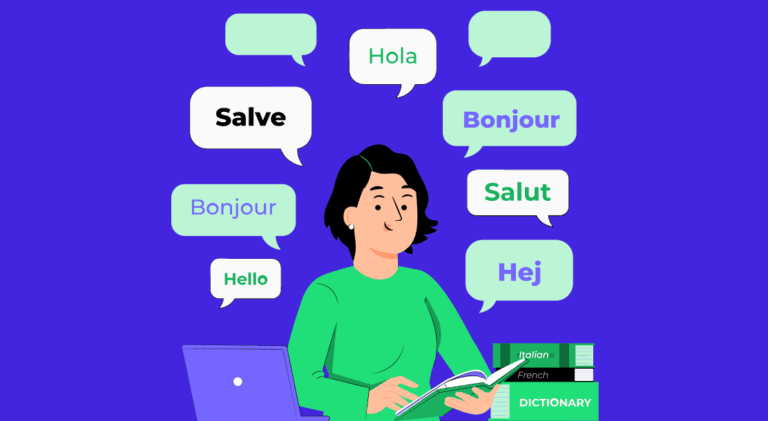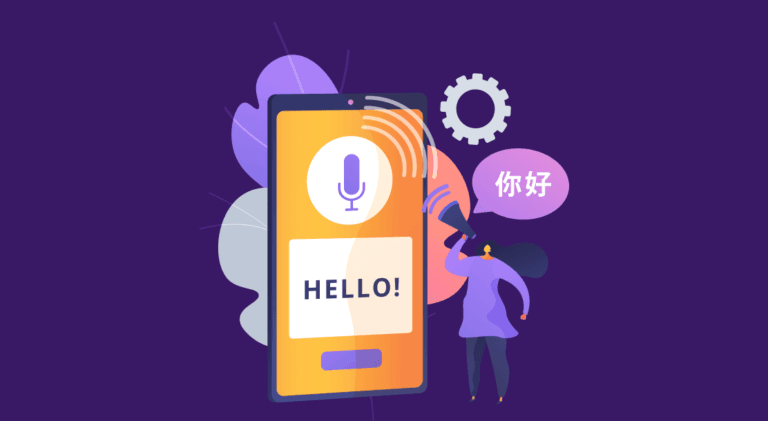12 Factors to Consider Before Setting Your Translation Service Cost


Do you own a language translation business? Or, are you a freelance translator? Are you confused about charging for your language translation service? Are you wondering if you should charge a translation service cost on a per-page basis, a per-word basis, or a per-document basis is better? Do the above thoughts worry you all the time? If so, this blog is just for you.
The translation industry gives you ample opportunities to explore your language translation potential. For instance, numerous B2-B and B2C companies want to share their business knowledge in different languages. Academicians want to share their research knowledge with different communities.
However, it becomes confusing to arrive at a fair rate for your language translation service due to the enormous opportunities. This blog walks you through the tips and tricks that you can apply to determine the right translation service cost.
Different Translation Pricing Models
The translation industry works on different translation pricing models. These include translation rates on a per-word basis, per-hour cost, flat translation charge, or costs calculated on a per-page basis. It is better to set a minimum translation service cost in some cases. Let’s explore these pricing models in detail.
Per-word basis
You can charge a translation service cost per word in this pricing model. For example, if you have to translate a 50,000-word document, you can charge $0.05/word. The total translation cost comes out to be 50,000*$0.05 = $2500.
However, you need to clarify a piece of crucial information from your client. Will they consider the word count before the translation or after the translation?
For instance, languages like Portuguese and Spanish end up with more words after a language translation. If you charge for the actual words in a document, you will get underpaid. If the document has 10,000 words before translation and has 12,000 words after translation, you should ideally charge for 12,000 words.
Per-hour basis
Here, the translation charge is based on the number of hours you put into translating a document. For example, if you spend 8 hours per day translating a document, you can charge anywhere between $30 – $70/ hour.
However, it is challenging to calculate the effort per-hour. Different documents require specialized efforts based on the subject matter expertise. Also, per-hour translation rates work well for editing and proofreading documents. Here, you need not work from scratch to translate a document.
Flat translation cost
Flat translation cost means you apply a specific translation service cost for the entire document. For instance, it is difficult to decode the number of words in a PDF or an image document. It is easier for you and the client to simplify the process and figure out an approximate cost.
In contrast, flat translation costs may not give you an estimate of the effort required. You may even end up spending more time and energy on the document.
Per-page translation charge
This pricing model can charge your clients page-wise instead of word or hour-wise. This model is relevant when translating handwritten notes or scannable PDFs. Here, you can determine the average word count of a single page and charge a fair rate.
However, remember that not all pages will have the exact word count. For example, imagine you have 100 pages to translate. Each page has an average of 400 words. And, you quote $40 as the translation charge. But, a specific page has 600 words; but despite the increased efforts, you will only get $40.
Minimum translation rates
Here, you can charge a minimum translation rate for a project irrespective of the word count. In this case, though you may translate minimum words, there will be additional requirements like intense research, an increased final word count, and more.
For example, your translation charge can be $100 for 500 words or less. If you get a higher volume of tasks, you can provide a discount and go for a per-word quotation.

Translation Service Cost: 12 Factors to Consider
Setting a fair translation cost is challenging. Also, additional requirements can pile up while you start the translation work. Hence, the cost of translation services depends on numerous factors like turnaround time, completion time, subject matter expertise, the volume of work, etc. Let’s understand these factors in detail.
1. Subject matter
What is the subject matter of the translation requirement? Is it a sales document? Or does it showcase complex financial transactions? More the complexity of the subject matter, intense translation effort is required.
Hence, you need to set a higher translation service cost for complex document translation. These documents include technical user manuals or legal documents. In this way, you get a fair rate for the intense effort you put in.
2. Completion time
By when does the client need the translated document? Are they flexible with the turnaround time, or do they require the document immediately within 24 hours?
If the completion time is less than 24 hours, you need to put in extra hours to finish the document. For instance, you will let go of break time and work overnight. In this case, your translation rates should be on the higher side.
However, if the client gives you the flexibility to finish the task in 3-4 days, you can charge a lower rate. Here, you don’t have to rush up your work schedule.
3. Translation language
In which language do you translate the document? Is it a common language like English or a rare language like Norwegian? Common languages have many translators available. You cannot charge more here as your clients have access to different translators.
But, if you specialize in translating a rare language, clients will be willing to pay you more. In this case, you can charge a higher translation service cost.
4. Volume of work
What is the volume of work you expect to receive? Is it a one-time translation assignment or bulk assignments continuously?
The translation pricing can be on the lower side if it is bulk volume. Here, you need to build a long-term relationship with your client by offering them discounts. However, the translation cost can be higher for a one-time assignment as there is no certainty about the future.
5. Additional requirements
Does the client want you to edit and proofread the translated document? Do you have to deal with charts and graphs? Does the final document require the right formatting to make it readable?
These additional requirements need more time and effort. It can be challenging to read through the images and translate the document. Hence, you need to vary the translation rates for different services. Charge high rates for editing and proofreading separately, as these are entirely different services.
6. Availability of software
Do you use translation software? Or do you translate the documents from scratch?
Translation software relies on automation software to recollect previously used terms and phrases. Here, you need not put extra effort into translating the same information. The software automatically inserts the previously used phrases, words, or paragraphs. Hence, you may apply a lower translation cost if you use translation software.
7. Pricing model
Select the best pricing model that works for you. For instance, if you are sure about the document’s word count, apply a translation charge on a word basis. However, if you have to translate from scanned PDFs, images, or written notes, it’s best to keep the translation service cost page-by-page.
Similarly, if the client does not have a large volume of work, feel free to apply a minimum translation charge. Ensure that you get value for your effort, irrespective of the number of words.
8. Compliance requirements
Are you a certified translator? If so, clients will be willing to pay more to get quality work. For example, ATA (American Translators Association) certification is a well-respected credential for a translator in the US. Possessing ATA certification shows that you have the necessary skill sets to provide quality translation.
Similarly, ISO standards for translation project you as a highly qualified translator. The two ISO standards are ISO 17100 and ISO 9001. While ISO 17100 gives your translation service credibility in the international market, ISO 9001 conforms that the translation passes the QMS (Quality Management System) test standards.
9. Eliminate non-essential information
Understand what is essential and non-essential information in a document. For instance, people may not read all the pages of a translated training manual. They will only focus on the key points and skip the rest. Translating the unessential information can lead to waste of both your time and efforts.
Hence, you need to contact the right stakeholders to decode the most important information in a document. Sit with different departmental heads to know the expectations of the employees. Focus your efforts based on the long-term objective.
10. Target audience of the translated document
Who is the target audience of the translated document? Is it the common people? Or does the document cater to academicians, lawyers or doctors? In the former case, the level of translation need not be complex and detailed. Simple phrases and terms work well for a public document like advertisements, self-help books, coffee table books, etc.
In contrast, documents catering to a specialized audience need higher levels of translation by considering domain specific words and phrases. These documents require higher levels of research. Usually, specialized document translation costs more, and you can go for higher translation pricing.
11. Desktop publishing
In desktop publishing, you need to generate pages of a document with both images and text. Unlike mere translation of the text matter, you need also to align pictures and illustrations. Here, you need to have a deep eye for detail. With creativity, you can provide a storytelling narrative to your final document.
Desktop publishing is challenging and requires high expertise. Explicitly confirm with your clients if they need a simple translation or desktop publishing. Usually, the cost of translation services for desktop publishing is charged hourly. Hence, desktop publishing allows you to earn a higher income.
12. Consider payment norms
What are the payment terms of your client? Will they pay before or after the service? Do they pay weekly, quarterly, or monthly? Does this align with your payment norms?
Have a frank discussion with your client and stick to a model that works out well for both of you. For instance, prioritize the clients who are willing to pay frequently. This aspect builds trust and credibility in a relationship. Also, offer discounts to clients who pay upfront. In this way, you can even ensure a higher volume of work.
Key Takeaways
- There are five major translation pricing models: per-word, per-hour, per-page, flat pricing, and minimum translation rates.
- Translation cost varies based on the translation language and the subject matter expertise. High-level subject matter translation costs more.
- Editing and proofreading are additional parts of the translation. You can charge extra for these other services.
- Based on the industry type, all the information in a document is non-relevant. You can cut out irrelevant information and save your translation time.
- An ATA (American Translators Association) certification can enhance your credentials as a translator.
Conclusion
The next time you are confused about charging for a translation project, the above factors and checklists will come in handy. Consider different factors like turnaround time, language, subject matter expertise, target audience, translation tools, and compliance requirements to get a fair deal for your project.
FAQs
The translation cost depends on different factors like subject matter expertise, turnaround time, the volume of work, pricing models, target audience, etc.
When you eliminate additional requirements like proofreading, editing, and desktop publishing, translation rates decrease.
Based on your requirements, translation pricing can be based on: per-word basis, per-hour basis, flat transaction charge, per-page translation cost, and minimum translation rates.
There are many translation services available online and one of the best ones is Pepper Content’s translation services. Pepper features countless translators capable of translating your texts into various languages with utmost attention to details.
The translation charge per-word depends on the language and country of the translator. For example, in India, Hindi to English translation can be as low as Re. 1/word.
Different texts have varied translation rates based on the complexity of the subject matter, the language of translation, additional requirements like editing & proofreading, and desktop publishing.
Urgent translations have a due date of under 24 hours. The cost of translation services can be higher than the average cost in this case.
Latest Blogs
Explore how Google’s 2025 AI search updates triggered ranking chaos. Learn actionable strategies to adapt your SEO for AI Overviews, zero-click searches, and SERP volatility. Stay ahead now.
Learn how to rank on AI search engines like ChatGPT, Perplexity, and Gemini by optimizing your content for authority, structure, and relevance. Stay ahead in AI-driven search with this strategic guide.
Explore the best healthcare SEO services for your medical practice. Improve online visibility and effectively reach more patients in need of your services.
Get your hands on the latest news!
Similar Posts

App and Website Translation
4 mins read
27 Tips For App Translation and Localization

App and Website Translation
5 mins read
7 Best Practices Of Translating Apps

App and Website Translation
4 mins read